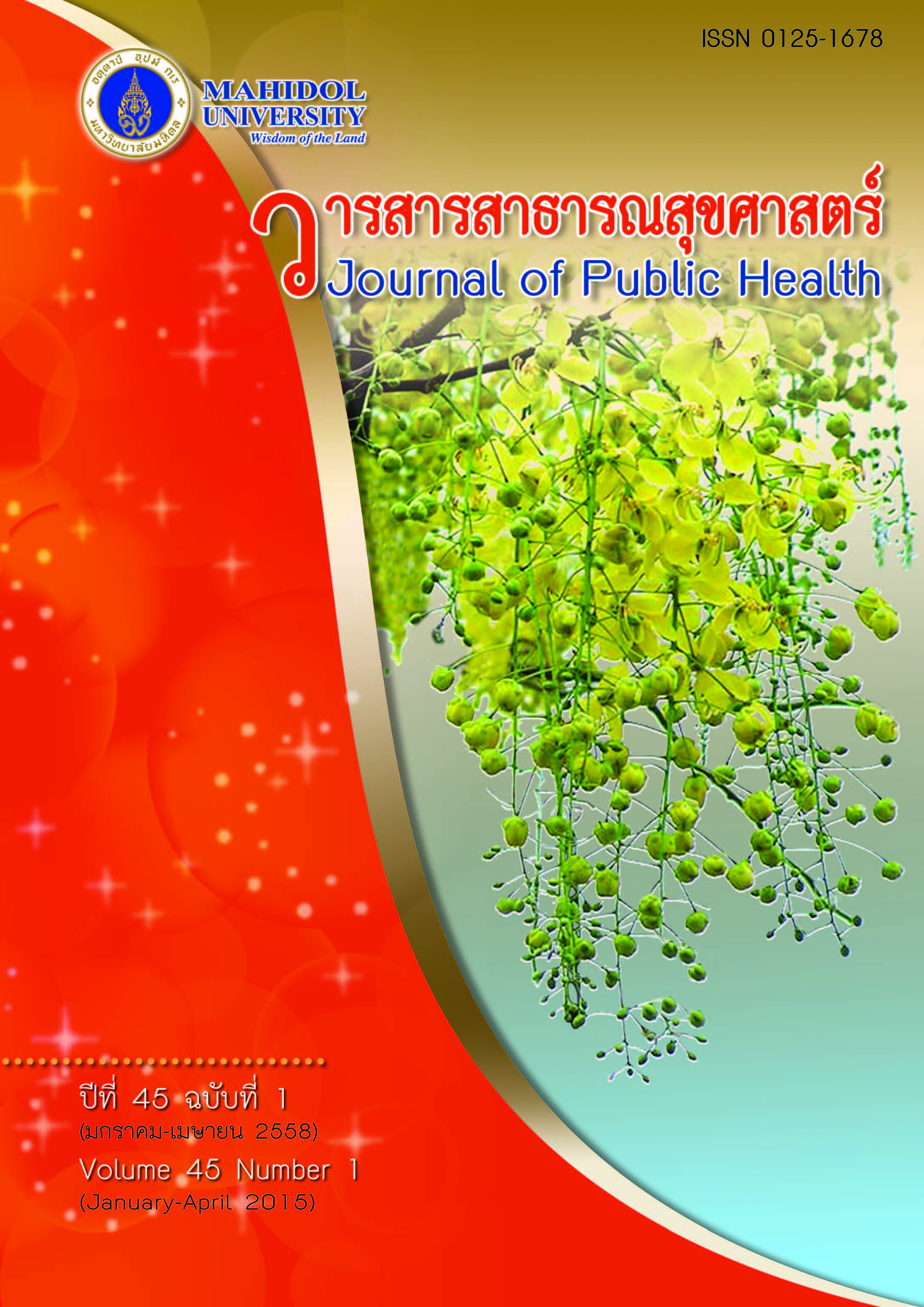การพัฒนาแบบประเมินอาหารบริโภคด้วยตนเองสำหรับ ผู้ป่วยผ่าตัดระบบทางเดินอาหาร ก่อนหรือหลังการผ่าตัด
Keywords:
แบบประเมินอาหารบริโภคด้วยตนเอง, ผู้ป่วย, ผ่าตัดระบบทางเดินอาหาร, Self-dietary assessment tool, patients, gastrointestinal surgery, malnutritionAbstract
บทคัดย่อ
ผู้ป่วยที่ต้องได้รับการผ่าตัด เป็นกลุ่มเสี่ยงต่อภาวะทุพโภชนาการทั้งก่อนหรือหลังการผ่าตัด แบบประเมินการรับประทานอาหารเดิมอาจไม่สามารถใช้ตรวจพบปัญหาทางโภชนาการเบื้องต้น วัตถุประสงค์ของการศึกษานี้เพื่อพัฒนาแบบประเมินอาหารบริโภคด้วยตนเอง รูปแบบการวิจัยเป็นการวิจัยเชิงคุณภาพ ดำเนินการโดยมีขั้นตอนดังนี้ ประเมินแบบประเมินอาหารที่ใช้ฉบับเดิม ทบทวนวรรณกรรม พัฒนาแบบการประเมินอาหารบริโภคด้วยตนเองจำนวน 2 แบบ จัดสนทนากลุ่ม เพื่ออภิปรายและให้ข้อคิดเห็นเกี่ยวกับแบบประเมินที่พัฒนาขึ้น ปรับเพื่อให้ได้เพียง 1 ต้นแบบ และประเมินโดยใช้แบบสอบถาม วิเคราะห์ข้อมูลเชิงเนื้อหาร่วมกับข้อมูลเชิงปริมาณ กลุ่มตัวอย่างจำนวน 15 คน ประกอบด้วย ผู้ป่วย 3 คน พยาบาล 8 คน และนักโภชนาการ 4 คนเข้าร่วมการสนทนากลุ่ม ประเด็นที่แนะนำให้ปรับปรุงคือ เพิ่มการใช้ภาพสื่อความหมาย ลดการใช้คำศัพท์เฉพาะและลดรายละเอียดที่ไม่จำเป็น ทำเครื่องหมายที่รูปเพื่อบอกปริมาณอาหารที่รับประทาน ชุดเครื่องมือประกอบด้วยแบบประเมินอาหารบริโภคด้วยตนเองสำหรับผู้ป่วยและคู่มือสำหรับเจ้าหน้าที่ และให้คงสัญลักษณ์ไฟจราจรเพื่อประเมินความเพียงพอในการบริโภค คณะผู้วิจัยได้ปรับปรุงเพื่อทำเป็นต้นแบบเดียว และได้ทำการประเมิน พบว่า มากกว่าร้อยละ 60 ของกลุ่มตัวอย่างเห็นด้วยกับแบบประเมินอาหารบริโภคด้วยตนเองฉบับปรับปรุงทั้ง 6 ด้าน อย่างไรก็ตาม ควรนำแบบประเมินนี้ไปทดสอบความตรงในผู้ป่วยในก่อนนำไปใช้จริง
Self-Dietary Assessment Tool Development for Gastrointestinal Surgery Patients, Pre/Post Operative
ABSTRACT
Surgical patients are at risk of malnutrition before and after an operation. Previous eating evaluation tools may not be appropriate for early detection of nutrition problems. The objective of this study was to develop a self-dietary assessment tool. The research method was qualitative, performed by the following steps: evaluate a previous eating evaluation tool; review previous research studies; develop 2 models for a self-dietary assessment tool; organize a focus group to discuss and gather opinions on the develop self-dietary assessment tool; revise the tool to get a prototype of a self-dietary assessment tool; and assess the tool using a questionnaire. Content and quantitative data were analyzed. The total number of those engaged in the development process was 15, 3 patients, 8 nurses, and 4 nutritionists who participated in the focus group. Suggestions to adjust the tool included adding more pictures for conveying meaning; reducing the use of technical terms and needless details; marking pictures to indicate the amount of food eaten; developing a set of self-dietary assessment materials as a tool for patients and a handbook for medical officers; using traffic signal light symbols to indicate food intake adequacy. The research team revised the two models to get only one prototype and assessed it. It was found that more than 60% of participants in this development process agreed with the prototype for self-dietary assessment in all 6 of its major dimensions. However, this assessment tool should be further tested for its validity among inpatients before its use.
Downloads
Issue
Section
License
Creative Commons License CC-BY-ND


